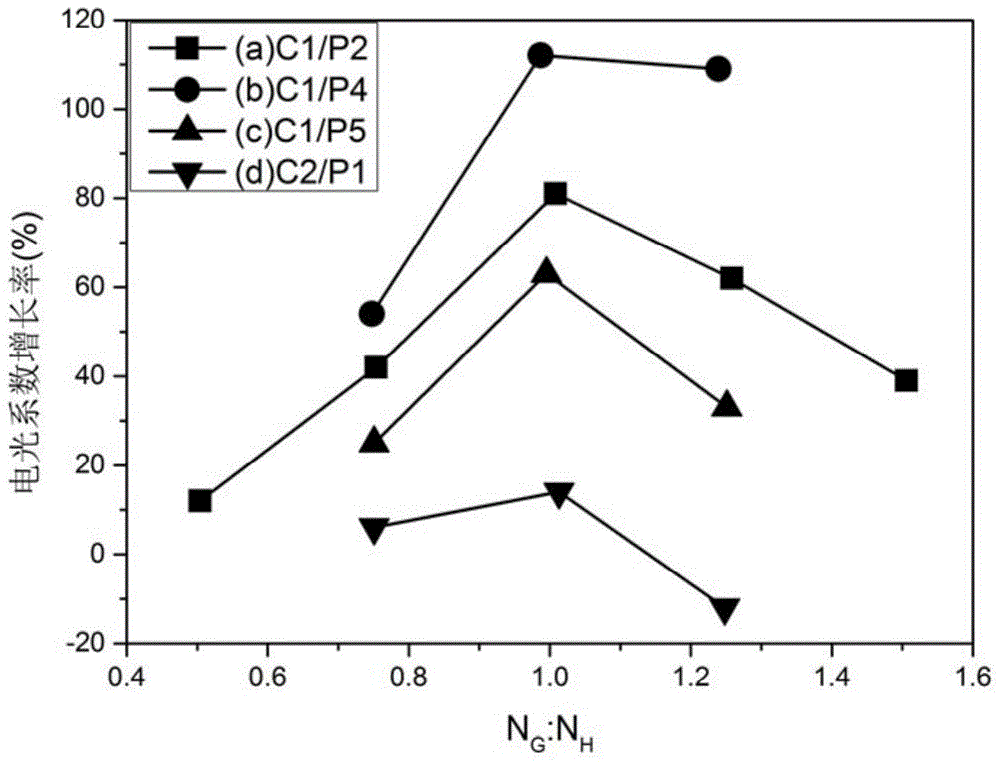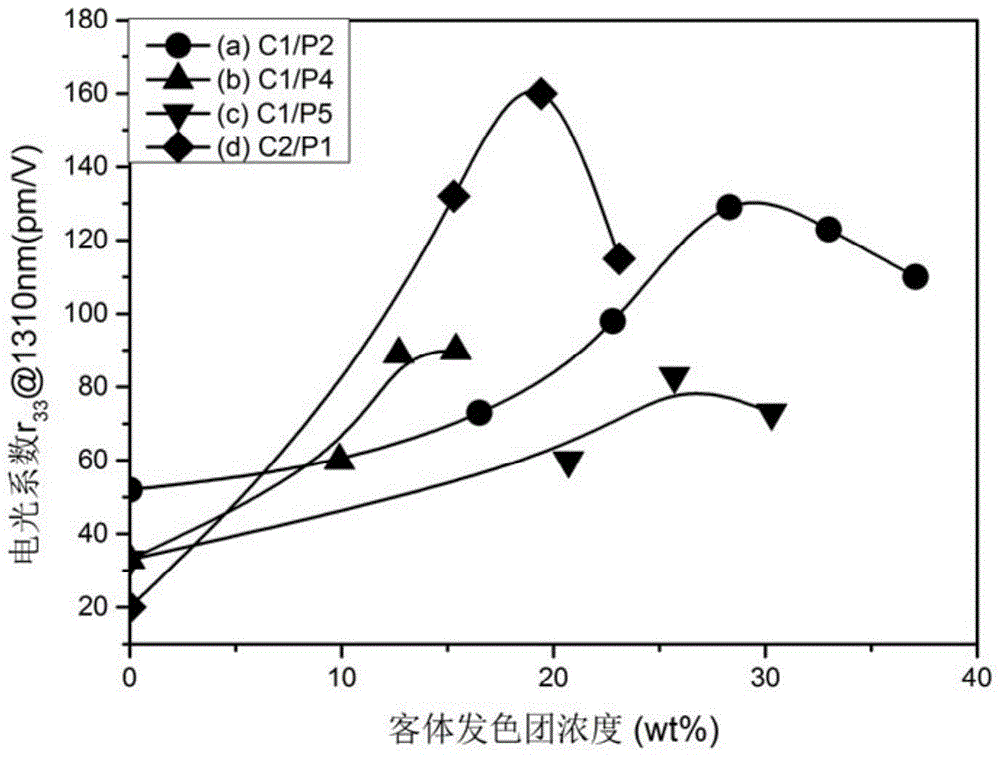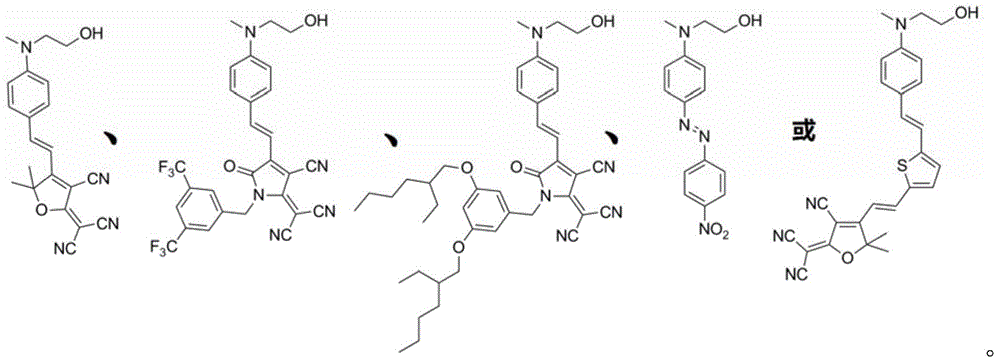Double chromophore complex system and its synthesis method and application
A dual chromophore and chromophore technology, applied in the dual chromophore composite system and its synthesis and application fields, can solve macroscopic phase separation, limit the maximum electro-optic coefficient, reduce the phase of polymer and nonlinear optical chromophore Capacitance and other issues, to achieve the effect of improving the electro-optic coefficient and simplifying the synthesis
- Summary
- Abstract
- Description
- Claims
- Application Information
AI Technical Summary
Problems solved by technology
Method used
Image
Examples
Embodiment 1
[0038] Synthesis of the dual chromophore complex system C1 / P2 with the following structure:
[0039]
[0040] The synthesis method is as follows:
[0041] Weigh 5 parts of 0.04g host polymer P2 containing host chromophore 1, and then add them to 3mL serum bottles numbered 1-5 respectively; according to the molar ratio of guest chromophore to host chromophore is 0.50:1, 0.75:1, 1:1, 1.25:1 and 1.50:1, add 0.0079g, 0.0118 g, 0.0158g, 0.0198g and 0.0237g of the guest chromophore C1, that is, the weight percentages of the guest chromophores numbered 1 to 5 are 16.5%, 22.8%, 28.3%, 33.0% and 37.1% respectively. Chromophore complex system C1 / P2.
Embodiment 2
[0043] Synthesis of the dual chromophore complex system C1 / P4 containing the following structure:
[0044]
[0045] The synthesis method is as follows:
[0046] Weigh 3 parts of 0.04g host polymer P4 containing host chromophore 2, and then add them to 3mL serum bottles numbered 6-8; according to the molar ratio of guest chromophore to host chromophore is 0.75:1, 1:1, and 1.25:1, add 0.0044g, 0.0058g, and 0.0073g of guest chromophores to host polymer P4 containing host chromophore 2 in serum bottles numbered 6-8 in sequence Group C1, that is to obtain the double chromophore composite system C1 / P4 with the weight percentages of the guest chromophores numbered 6-8 being 9.9%, 12.7% and 15.4% respectively.
Embodiment 3
[0048] Synthesis of the dual chromophore complex system C1 / P5 with the following structure:
[0049]
[0050] The synthesis method is as follows:
[0051] Weigh 3 parts of 0.04g host polymer P5 containing host chromophore 3, and then add them to 3mL serum bottles numbered 9-11 respectively; according to the molar ratio of guest chromophore to host chromophore is 0.75:1, 1:1, and 1.25:1, add 0.0104g, 0.0139g, and 0.0174g of guest chromophores to host polymer P5 containing host chromophore 3 in serum bottles numbered 9-11 in sequence Group C1, that is to obtain the double chromophore composite system C1 / P5 with the weight percentages of the guest chromophores numbered 9-11 being 20.7%, 25.7% and 30.3% respectively.
PUM
| Property | Measurement | Unit |
|---|---|---|
| thickness | aaaaa | aaaaa |
Abstract
Description
Claims
Application Information
 Login to View More
Login to View More - R&D
- Intellectual Property
- Life Sciences
- Materials
- Tech Scout
- Unparalleled Data Quality
- Higher Quality Content
- 60% Fewer Hallucinations
Browse by: Latest US Patents, China's latest patents, Technical Efficacy Thesaurus, Application Domain, Technology Topic, Popular Technical Reports.
© 2025 PatSnap. All rights reserved.Legal|Privacy policy|Modern Slavery Act Transparency Statement|Sitemap|About US| Contact US: help@patsnap.com



